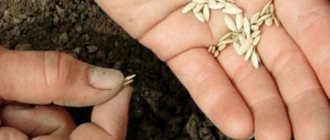Chrysanthemums are considered one of the most beautiful autumn garden flowers because they begin to bloom when most of the flowers in the flower beds have already faded (or are finishing their blooming).
And some gardeners are convinced that these cultivated plants do not need care either in summer or autumn. It is necessary to find out - is this really so?
It turns out that some chrysanthemums require care in the fall and some preparation for winter. So, they need to be dug up for the winter and stored in the basement or other cool and dark room. But there are varieties of these flowering perennials that can winter well in open ground with appropriate preparation.
Features of care in autumn and preparation for winter
In different regions they begin to prepare chrysanthemums for winter at different times, starting around the end of summer, August. Typically, caring for these flowers consists of pruning them, fertilizing them and preparing them for winter. Different types of these flowers require their own approach to wintering:
- some varieties should be dug up and stored in a dark, cool and dry place;
- and other chrysanthemums overwinter in open ground without digging.
It is worth talking about each of these agrotechnical activities in more detail.
Video: caring for chrysanthemums in autumn and preparing for winter
Autumn replanting of perennial chrysanthemums
Autumn planting of Korean chrysanthemums is possible only in the southern regions of our country and in the middle zone. The plant, even in a flowering state, tolerates transplantation well. But it is advisable to choose seedlings with a closed root system.
Good planting time is from late August to mid-September. A chrysanthemum planted within this time frame will have time to take root and, with reliable insulation, will successfully survive the winter.
For the plant, choose sunny areas with loamy, fertile soil. The distance between the bushes is left based on the height of the plants. Low-growing varieties are placed after 25-30 cm, tall varieties after 40 cm.
Read also How to identify male sea buckthorn from female photo
The chrysanthemum is carefully removed from the pot and placed in the planting hole without deepening the plant. After planting, the flower is watered abundantly.
There is nothing complicated about caring for chrysanthemums in the fall and preparing for winter. If everything is done correctly, the flower will easily withstand frost and will delight you with lush blooms and rich colors next year.
Growing and caring for spherical chrysanthemums brings only pleasure to the gardener. The bush blooms early and keeps the buds in a state of dissolution for a long time. The plant is unpretentious and even without scrupulous pruning the bush always turns out lush and uniform. Low-growing chrysanthemum is responsive to fertilizing; regular fertilization ensures lush flowering during the season.
Autumn pruning and fertilization
At the end of summer - beginning of autumn (August-September), complex fertilizers containing potassium (less) and phosphorus (more) are applied to each chrysanthemum bush. These elements are necessary for flowers so that their root system accumulates the nutrients it needs for normal wintering.
Pruning chrysanthemums in the fall is a necessary procedure that makes it easier for gardeners to cover for the winter those varieties that overwinter in open ground. And those flowers that are put away in the basement for the winter should also be trimmed - this makes them easier to store; long stems can be accidentally broken off.
Chrysanthemum stems are pruned immediately after the onset of the first autumn cold weather. In this case, the length of the cut shoots should not exceed 14-15 cm.
Placement in a basement or cellar
There are chrysanthemums that under no circumstances are able to winter in open ground. These include:
- specimens grown in greenhouse conditions;
- hybrids of foreign selection;
- large-flowered;
- multiflora.
. The bushes are carefully dug up, transplanted into wide pots and placed in a warm room for the whole winter. The flower feels good in the room and does not take up much space.
Multiflora is planted in loose, fertile soil. It won’t be possible to move it with a lump of earth, but if some of the garden soil remains on the roots, there is no need to specifically dig it out. A layer of drainage material is poured onto the bottom of the pot, which can be expanded clay, small pebbles, polystyrene foam or perlite. Fertile soil is poured on top, to which you can add a little high-moor peat and washed coarse sand.
The bush is planted in a pot, the roots are straightened, the remaining space is filled with soil, watered and lightly compacted. Place them in a well-lit place and observe how flowering occurs. When the inflorescences are dry, they are cut off, after which the flowerpots are placed in a cool place, for example, in the basement. Backlighting is not required at this time, but care must be taken that the temperature does not drop below 0° C.
Instructions for use of the veterinary drug Catozal
The second storage method is simpler and suitable for beginner gardeners. When frosts begin, the flowers are dug up along with a lump of earth, placed in boxes and taken to the basement. During wintering, make sure that the soil does not dry out. If necessary, moisturize by spraying. The temperature in the cellar should not fall below +3° C. The flower is kept in the basement all winter. In the spring, it is taken out, inspected, divided into cuttings and rooted in pots. If the root system is in good condition, you can plant directly in open ground.
How to preserve chrysanthemums in winter
Unlike other flowering perennials, which are left in the open ground for the winter and practically not covered in case of severe cold, chrysanthemums require special attention. They should either be dug up and put in a basement or cellar, or carefully covered before cold weather without digging up, if the variety is left in open ground for the winter.
These measures will allow chrysanthemums to be preserved in winter for active flowering in the following seasons. And you should remember: if these measures are not taken, then some perennials will simply freeze out even in a fairly warm winter.
Video: how to preserve chrysanthemums in winter
Which varieties overwinter in open ground, which require digging?
Chrysanthemums that require mandatory digging include most varieties grown exclusively for cutting. But large-flowered (Indian) species of these flowers also do not tolerate winter well, so it is advisable to dig them up immediately before frost and keep them in basements.
Cut Indian large-flowered varieties (Golden Orpheus, Helen and similar species) are usually carefully dug up and transplanted into greenhouses, conservatories or glassed-in loggias , where these flowering perennials feel great until the onset of the warm season. In regions where warm summers do not last long, it is recommended to grow cut varieties directly in heated greenhouses or greenhouses.
But for most regions of our country (Middle Zone, Urals and Siberia), we can offer flower growers for cultivation on their plots the following Korean (small-flowered) varieties of chrysanthemums, which can be left in the open ground for the winter without digging . The most popular of them are:
- Oak;
- Korean;
- Chamomile;
- Purple Haze;
- Malchish-Kibalchish;
- Red Moscow;
- Everest.
But in the southern regions, all types (Korean and Indian) of these beautiful flowers can be safely left to spend the winter in flower beds - the winters there are so warm that chrysanthemums do not freeze out.
Methods of preservation: digging and leaving in the ground with shelter
There are only two main ways to prepare these perennial flowering plants for winter:
- digging;
- leaving in open ground followed by shelter.
If chrysanthemums are left to overwinter in flower beds, then the bushes should be covered in stages with the onset of frost. Trimmed bushes should be hilled up so that there are no holes or depressions around them in which water can accumulate - plants do not need excess moisture before frost. Hilling of chrysanthemums should be carried out so that the cut stems are completely covered with earth. The next stage is covering the flowers with spruce branches, dry leaves or sawdust. Chrysanthemums should be covered with these materials after the cold weather sets in (that is, in October-November).
You can also use slate or iron sheets as a shelter. A “wall” of several rows of bricks is laid around the bushes, on which sheets of slate are laid. Such a shelter does not allow water or snow to get inside, but is a well-ventilated structure.
Important! Thus, Korean (small-flowered) chrysanthemums must be covered in the Leningrad region, the Middle Zone (Moscow region), the Urals and Siberia.
Video: how to cover chrysanthemums for the winter
Features of the preservation of spherical and dwarf chrysanthemums
Globular chrysanthemums were bred by breeders relatively recently; this species is intended for decorating garden plots or balconies and loggias in an apartment. If such varieties grow in open ground during the summer season, then in order to preserve spherical chrysanthemums in winter, you need to worry about how to properly prepare the plant for the cold. In the southern regions, it is enough to cover these perennials with straw or spruce branches. But in colder areas, it is recommended to dig them up before the onset of cold weather. As soon as the above-ground part is completely dry, the spherical varieties should be dug up, slightly dried in the shade, cleared of soil, dried shoots removed and placed in containers filled with straw or sawdust. The rhizomes should be stored in a cool, dark place until spring.
Dwarf chrysanthemums are mainly intended for growing indoors, but they are also grown in open ground . If these flowers grow on a balcony, in an entrance or in a room, they should be cut off before winter, leaving stems no more than 10 cm long. Then the plant is placed in a bright room, the temperature in which is kept around +8 C, watering once every 25-30 days . If this is not possible, then you can keep cut chrysanthemums in the room in winter, watering them in the same way as in summer.
Not all types of dwarf chrysanthemums can overwinter in open ground. And if the gardener has decided not to dig up these flowering plants, then they should be well covered with the onset of frost. To do this, cut the stems to a length of 10-12 cm, cover them with soil or peat (necessarily dry) or leaves. And cover the top with any covering material.
How to care
The main task when caring for a perennial spherical chrysanthemum is to prepare it for wintering, because it does not tolerate frosts well, otherwise these flowers are unpretentious. There are several ways to help your garden spherical chrysanthemum survive the winter:
- insulate flower beds;
- dig up the root system to preserve it in winter.
Without digging due to the danger of freezing, these chrysanthemums can easily grow in one place for at least 5 years, because they are perennial plants. The choice of a specific wintering method depends on the place where the spherical chrysanthemum is grown; in the southern part of Russia it can remain in a flower bed in winter. But you need to trim the stems a little and mulch the root system. Also, advice on how to properly survive the winter can be given by sellers in specialized stores where it is advisable to purchase planting material.
Pruning a bush before wintering
Another option for wintering spherical chrysanthemums: shortly before flowering ends, make a fence made of plastic bottles around the flowerbed. After the stems have dried, they should be cut to 10 cm, the roots should be dug up, and the flowers should be placed in a dark and cool place, covered with sand, sawdust or spruce branches. Flowers can also be placed in deep vases for the winter. The place for wintering should be chosen in such a way that there is free air ventilation to avoid the formation of mold. At the beginning of spring, when the sun begins to warm up more actively, it is necessary to return the flowers to the street.
Pruning is not necessary when caring for these chrysanthemums - their crown forms naturally, but some gardeners pinch the tops 3 weeks after planting, and after a while they partially cut off the central shoot. It must be remembered that flowers cannot be cut while they are blooming.
Another important task of the gardener when growing this plant is to protect it from sunlight in the hot summer, otherwise the leaves will receive a severe burn, which is diagnosed by their brown color. As a preventative measure, you can make a canopy from non-woven material that will not touch the plant. Diseased leaves must be disposed of immediately.
Watering is an important part of care; not only regularity is important, but also the quality of the water; settled or rain water is best. The water should be soft, for this you can drop ammonia into it. In hot summers you should water with small but frequent portions of water. Thanks to proper watering, the flowers become more lush and the shoots do not become lignified.
With regard to spherical chrysanthemums, the principle applies - it is better to give less fertilizer than to exceed the dose. When applying fertilizers to the soil, you must adhere to the following rules:
- do not fertilize the soil for a year after planting;
- during the active growth of flowers, you need to apply organic fertilizers; it is best to choose mullein or humus;
- When buds form, you need to add superphosphate.
Read also: Moscow beauty lilac planting and care in open ground
If the plant develops well, then fertilization can be done once - in the spring before the flower buds appear.
We must not forget about periodic loosening of the soil, which will ensure free access to moisture and air. Ball-shaped chrysanthemums are not immune to disease and attacks by harmful insects. The greatest dangers come from caterpillars, aphids, spider mites and powdery mildew, which spoil the leaves, changing their shape and color. Their appearance can be caused by excessive watering or sudden temperature fluctuations. In addition to following all the rules of care, you can protect yourself from them by treating them with special preparations; the most effective are those containing copper. Spraying is best done in summer. Another way to escape from pests is to change the top soil layer.
Despite belonging to perennial crops, it is advisable to transplant spherical chrysanthemums to a new place 2 years after planting by digging up and dividing the bush; this will improve the appearance of the plant and help preserve varietal characteristics.
Typical mistakes in caring for chrysanthemums in autumn and preparing for winter
The main mistakes that gardeners make when caring for chrysanthemums in the fall may be the following:
- do not apply fertilizer to flowers in late summer - early autumn;
- Do not dig up for the winter those varieties that should be kept indoors during cold weather;
- They do not properly cover these perennials that overwinter in open ground.
Caring for chrysanthemums in the fall and preparing these flowers for winter is not a very labor-intensive process. However, improperly carried out procedures for preserving these beautiful flowers can lead to the plants freezing. And only following all the rules for caring for chrysanthemums will allow you to preserve these flowers in the winter in order to enjoy their bloom again next year.
All the secrets of the globular chrysanthemum; its cultivation and care will not take much time and effort. These wonderful plants bloom early, they are unpretentious and give your garden an unusual look.
Chrysanthemum globulus or Chrysanthemum Multiflora is a relatively recently bred hybrid. Its height is about 50 cm and amazes observers with its bizarre shape. The fact is that the inflorescences take the shape of a regular ball and require almost no pruning. The foliage is not visible at all, which means wonderful flower balls will appear in your garden. In addition, they are unpretentious in care and can please the eye for 3 whole months: from August to October.
Dependence of the beginning of flowering on the length of daylight hours
Chrysanthemums are short-day plants. They develop green mass between April and August, when the night is shorter than the day. Gradually this process slows down in accordance with the natural cycle.
When daylight hours decrease, buds begin to form. Accordingly, the earlier the short day arrives, the faster these plants will form buds. Chrysanthemums usually bloom from August to December, when darkness prevails.
In greenhouse conditions, this feature makes it possible to artificially provoke flowering.
How to speed up flowering by shading
Many gardeners have adapted to provide shading for flowers growing in open ground in order to induce early flowering. To do this, from the beginning of August, chrysanthemum bushes begin to be shaded in the morning and evening hours so that their daylight hours last ten hours.
Shading must be done very carefully so as not to damage the fragile stems. Stakes are installed on the sides of the flower bed so that they are higher than the bushes. Thick, dark, opaque material is stretched over the stakes or covered with cardboard boxes on top.
Care after flowering
The main rule for caring for a blooming chrysanthemum is that faded flowers must be carefully cut off, without leaving them to dry on the bush. This will provide the plant with better ventilation and protect it from possible infections that can develop in the wilted tissues of the inflorescence.
Cutting flowers into bouquets is welcome; it has a beneficial effect on the quality of subsequent flowering.
Immediately after flowering, chrysanthemums are cut back by about one third.
If flowering ends before frost, then the plant, which remains in the garden until spring, can be fed with organic matter so that new strong shoots form, as a guarantee of a successful winter.
For chrysanthemums overwintering in pots, nutritious soil for replanting will provide such support.
Varieties of chrysanthemums
There are several types of plants. The fact that there are several varieties in growth and flowering periods is why they remain so popular. There are low-growing, medium-growing and tall-growing chrysanthemums. The first reach about 20-30 cm in height, the second 30-40, and the last 60-70 cm. The most common are medium-sized plants because of their moderate flowering and the ability to plant in completely different places. But undersized ones can decorate the garden, flower beds, loggia, rooms and any room.
Multiflora chrysanthemums are also distinguished according to their flowering period. Early flowering chrysanthemums bloom in August, mid-blooming ones in September, and late flowering chrysanthemums in late September and October. With the right selection of different species, you can ensure yourself a flowerbed that is always blooming from summer until the onset of cold weather.
Globular chrysanthemums
Growing chrysanthemums
Chrysanthemums can be grown both in pots and in open ground. If you decide to plant this plant, then it is worth remembering several important features of the multiflora chrysanthemum when planting and caring for:
- First of all, lighting is important. If the bush is planted in a sunny area, this can prevent late and short-lived flowering, and also protect against the growth of long shoots.
- The soil should be mixed with compost or humus to improve its fertility. It should be light and loose. But you shouldn’t overdo it - chrysanthemums can grow a lot and bloom a little.
- The Multiflora chrysanthemum should be planted on cloudy, non-sunny days, in the summer - in the early morning or evening. The dug hole is first watered well, then drainage is placed, and then soil. It is not worth planting the chrysanthemum too deeply, since its root system is superficial; a hole of approximately 40 cm will be sufficient.
- After planting, the plant is pinched. His growth point is removed. The second pinching is done after 20 days, the shoot and a couple of nodes are removed. Some argue that the shape of the ball in the plant is genetically determined, so pinching only needs to be done once, and the chrysanthemum will take the desired shape on its own. Here each gardener decides for himself, but it is worth remembering that additional pinching does not harm the plant. In the first days, the globular chrysanthemum needs shelter from the sun. Non-woven fabrics are used that will not touch the leaves of the plant.
Chrysanthemum border planting and care – Cottage, garden, vegetable garden, indoor plants
Among the wide variety of garden ornamental plants, border chrysanthemum is especially loved by gardeners. No wonder. Unpretentious and frost-resistant groundcover varieties look great in flower beds and bouquets and have long become a common decoration of our garden plots.
What are border chrysanthemums?
Border or as low bush chrysanthemums are also called - ground cover - these are plants 20-30 cm high (less often 20-50 cm) with inflorescences of various shapes, sizes and colors. Border mini chrysanthemums are characterized by the following features: compactness, early and abundant flowering, absence of root shoots.
Chrysanthemums whose height reaches 25-30 cm are called border chrysanthemums. Among them there are both small-flowered and large-flowered varieties.
Among their advantages are also:
- variety of colors and shapes;
- long flowering (sometimes more than 3 months);
- high winter hardiness;
- unpretentiousness to growing conditions.
Thanks to these advantages, small flower “queens” have gained great popularity in landscape design. They are used to decorate flowerbeds, edgings and flower beds, planted along garden paths, decorated with plants placed in pots and flowerpots, terraces, gazebos, recreation areas, and used in bouquets and floral arrangements.
In autumn there are few flowering plants, and chrysanthemums become the main decoration of garden plots. They look great in garden beds, flower beds, and borders; they thrive in container plantings and last up to 30 days when cut.
Low-growing chrysanthemums: planting and care
Flowerbed of tall and border chrysanthemums
Border flower beauties are not capricious, but how to grow them on your site so that they delight you with lush and long-lasting flowering every year? The answer is simple: it is necessary to provide them with comfortable conditions for growth and development.
Landing location
Border varieties need a large amount of sunlight, so they are planted in the most illuminated part of the site, while the plants must be protected from prolonged exposure to direct sunlight, shading them during hours when the sun is especially active.
Priming
Border varieties do best in light, loose soils. Before planting plants, the soil can be fertilized with humus or compost, but this must be done carefully - without exceeding the minimum dosage of fertilizer. If the soil is oversaturated with nutrients, the plants will actively increase green mass to the detriment of budding.
Watering
Chrysanthemums in the garden need a lot of water, especially during dry seasons. It is important that moisture does not stagnate at the roots: this can provoke the development of various diseases. In summer, plants are watered regularly, once every few days (if there is no rain), allowing the soil to dry out slightly between waterings, preventing it from becoming too dry. In autumn, there is no need for frequent watering.
In addition to performing the listed activities, successful cultivation and care require periodic feeding with organic or complex fertilizers, pinching shoots to form more lush, spreading bushes, and regular inspections for the appearance of harmful insects and diseases. Wintering outside is possible for many groundcover beauties, but it is necessary to take care of additional shelter in case of severe frosts.
Varieties of border chrysanthemums
The variety of colors of border chrysanthemum inflorescences: purple, red, lilac, yellow, pink, orange, thanks to such a wide choice in shades, they will become an excellent decor at any summer cottage.
Low-growing border chrysanthemums have hundreds of perennial varieties. Let's present descriptions of just some of them, the most popular for growing in the middle zone:
- Ausma is an early variety that blooms from mid-July to early October. Globular, spreading, extends no more than 40 cm. The inflorescences are densely double, up to 3 cm, with yellow-orange (almost brown when half-dissolved). Frost resistance is high, subject to additional shelter for the winter. Korean chrysanthemum "Ausma"
- Alpine chrysanthemum (Alpinum) - rarely grows above 15 cm. Blooms from July to September. The leaves are silvery-green, collected in dense basal rosettes. The inflorescences of this dwarf chrysanthemum are single, white, chamomile-shaped, 2-4 cm in diameter, with an open large yellow core. Distributed in the alpine zone of European mountain systems. In the middle zone it overwinters under cover. Chrysanthemum "Alpine"
- Arctic chrysanthemum (Arcticum) - loose bushes, formed by creeping stems with dense dark green foliage. The height of the shoots is no more than 30 cm. In nature, Arctic chrysanthemum is common in the northern regions of Eurasia and America. Outwardly, it resembles snow-white daisies up to 4 cm in diameter with thin long petals and an open yellow core. Blooms from October to November. Frost resistance is high. Chrysanthemum “Arctic”
- Chrysanthemum White Night (Chrysanthemum parthenium) - compact, double, densely leafy, with erect shoots growing up to 50 cm. Baskets of chrysanthemum White Night are creamy white or soft yellow, quite large - 8-10 cm. Opens buds from the beginning of autumn and before the onset of cold weather. Frost resistance is average, the plant must be additionally covered for the winter. Chrysanthemum “White Night”
- Vernissage (chrysanthemum Vernisag) - spherical, grows no more than 50 cm, with dense dark green foliage. Semi-double 5-centimeter inflorescences are pale pink in the outer and middle circles and yellow in the center. It blooms vigorously from the beginning of September until the onset of cold weather. Frost resistance is average, additional shelter is necessary for the winter. Chrysanthemum “Vernissage”
- Chrysanthemum Dalnevostochnitsa is a winter-hardy and drought-resistant variety. Lush, spreading medium-leafed shoots grow strongly no higher than 50 cm. The baskets of the Far Eastern chrysanthemum are terry 5-centimeter juicy lilac pompoms. Flowering from the beginning of October until the arrival of frost. Chrysanthemum “Far Eastern”
- Lemunia (chrysanthemum Lemunija) is a neat, spherical beauty, up to 55 cm tall. Flowering from late summer to mid-autumn. The inflorescences are chamomile, salmon-yellow with a golden core, up to 6 cm in diameter. Frost resistance is average, winters under cover without problems. Chrysanthemum “Lemunia”
- Malchish Kibalchish is a non-double border species that blooms from late August to early October. The bushes are voluminous, low-growing, no more than 35 cm. The flowers are chamomile-shaped, bright purple, with a large golden core, about 6 cm in diameter. Frost resistance is very high, but it is still advisable to cover it for the winter. Chrysanthemum “Malchish-Kibalchish”
- Meotida is a compact hybrid, lush, with strong stems up to 50 cm long. Terry caps, golden-orange in color, 6-7 cm in size. Flowering from the end of July until the arrival of frost. Frost resistance is high. Chrysanthemum "Meotida"
- Chrysanthemum Stranger is frost-resistant, strong, neat, medium-leafed, up to 40 cm high. The simple 5-centimeter inflorescences of the Stranger chrysanthemum are distinguished by an open yellow core and the complex color of long, narrow, upward-pointing petals: on a light yellow background there are wide longitudinal stripes of a crimson hue. Flowering from late August to mid-October. Chrysanthemum “Stranger”
- Chrysanthemum Teddy Bear is a compact hybrid, growing no more than 40 cm upward, bred by the Crimean breeder T.A. Sholokhova is the granddaughter of the writer Mikhail Sholokhov. The caps are terry, small (up to 4 cm), delicate apricot color. Chrysanthemum Teddy Bear begins to bloom in October and remains decorative until the first November frosts. For successful wintering, additional shelter is necessary. Chrysanthemum “Teddy Bear”
- Chrysanthemum Spontime is a terry border variety. The bushes are densely leafy, grow up to 50 cm. Lush baskets are about 8 cm in size, the shade varies from light pink at the edges to salmon, blooms from mid-July to the end of September. Frost resistance is high, easily tolerates winter outdoors. Chrysanthemum "Spontime"
- Ostrich feather - needle-shaped, semi-double, medium frost resistance. The bushes are powerful, with medium-leafed shoots up to 50 cm long. The baskets are about 6 cm in size. The yellow-green core is framed by tubular reed petals, scarlet inside and salmon outside. It pleases with bright colors from the beginning of autumn until frost. Winters successfully under cover. Chrysanthemum “Ostrich Feather”
- Chrysanthemum Sudarushka is a Korean drought-resistant hybrid bred by the originator A.I. Not good enough. Spreading, highly branched, densely foliated, grows up to 50 cm. Semi-double corymbose 5-centimeter baskets, orange-pink with abundant yellow, lasts 26 days from the beginning of September. Overwinters in open ground. Chrysanthemum “Sudarushka”
- Chrysanthemum Talisman is a Korean ground cover variety that grows no more than 25 cm. Compact bushes with dense foliage. The caps are very small, about 2 cm in size, semi-double or terry, raspberry-pink or beetroot in color. “Talisman” blooms buds from August to September. Spends the winter under cover. Chrysanthemum “Talisman”
- Tango is a needle-shaped chrysanthemum of medium winter hardiness. Medium leafy bushes with strong shoots up to 50 cm in length. The caps are about 7 cm in size, with a bright yellow convex open core, framed by reed-shaped spoon-shaped petals that are deep scarlet inside and soft pink outside. Flowering from early September until frost arrives. In winter it needs shelter. Chrysanthemum "Tango"
- Chrysanthemum bouquet Triumph - unlike most of the listed varieties, it is annual. The bushes are compact in shape, densely branched, no higher than 20 cm. The caps are 5-7 cm in size, lush, terry, snow-white with a golden core. It blooms from the end of July until the onset of persistent frosts. Does not overwinter in open ground. Chrysanthemum “Triumph”
- Korean chrysanthemum Smile is a neat medium-leafed border variety, stretching no more than 35 cm. Terry baskets, up to 8 cm, deep pink with a light central part. The buds bloom early and for a long time, from the end of summer until lasting frosts. Shelter for the winter is needed. Chrysanthemum “Smile”
- Chervona sail (Scarlet sails) is a frost-resistant medium-leaf hybrid. The shoots are straight, about 50 cm long. The caps are chamomile-shaped, up to 7 cm, with large convex lemon-yellow cores and scarlet spoon-shaped petals rolled into tubes. Blooms buds from the end of summer until the onset of frost. Chrysanthemum “Chervona Vetrila”
- Chervona viburnum is a winter-hardy, medium-leaved hybrid. The height of the shoots is up to 50 cm. The caps are terry, deep scarlet, quite large - up to 7 cm in diameter. Blooms from early autumn until frost. Winters well in open ground. Chrysanthemum "Chervona Kalina"
You can read about chrysanthemums on the website by following this link...
The border dwarf chrysanthemum is especially loved by gardeners. Low-growing chrysanthemums are unpretentious in care, tolerate winter outdoors well, and are characterized by friendly and long-lasting flowering. Most of them are Korean varieties. They look great not only in flower beds and flower beds, but also in bouquets and remain fresh for a very long time when cut.
Source: https://rm-agro.com/hrizantema-bordyurnaya-posadka-i-uhod/
Chrysanthemum care
In addition to pinching and slight shading, chrysanthemums require additional care. Flowers are not very whimsical and finicky, but if you care for them properly, you can improve the flowering period.
The soil needs fertilizer. This is best done in the spring, during the growing season. Humus or mullein work well. But during the formation of buds, superphosphate is useful in a proportion of 50 g per 1 m². This is necessary for longer and stronger flowering.
Multicolor chrysanthemums
Multiflora needs to be watered often, as it loves moisture very much. On dry days, make sure the soil is moist and does not dry out. For watering, it is better to use settled or rainwater with a few drops of ammonia for softness.
Chrysanthemums can suffer the most from caterpillars. Therefore, pay attention to the appropriate chemicals and spray periodically to prevent caterpillar infestations.
If you find blackened leaves or bare stems on a bush, this means that the plant’s soil is overly moist and the bush itself has too many inflorescences. All this is a sign of the disease “powdery mildew”. When you first detect this disease, you should immediately take the following steps:
- Trim off damaged stems and foliage.
- Get rid of the top soil, where the spores of the fungus that harm the plant are located, and replace it with new one.
- Spray the flowers with a copper-soap solution. To do this, you need to dilute 10 g of copper sulfate in 250 ml of water and add to 10 liters of warm water, where 100 g of soap was previously diluted. This solution is enough for 5-6 sprayings with a break of 7 days.
The plant can get burned if there are high temperatures outside for a long time. You can recognize it if you notice yellowish or brown leaves that have begun to dry out. Such a sheet should be removed immediately. To protect chrysanthemums from root rot, you should add Fitosporin to the water for irrigation. You can water with this water for preventive purposes or in courses.
Diseases and pests
Chrysanthemums are plants that are very resistant to various diseases. However, even with such “strong ones” difficulties can arise.
- Occasionally, signs of powdery mildew appear on the leaves. A sign of the disease is a white coating on the foliage; it begins to fall off. The cause of the disease is excess moisture, sudden temperature changes, and bush density. In the summer, for prevention, the plant is treated with copper-based preparations.
- When growing flowers without drainage, the root system may rot. To treat root rot, chrysanthemums are watered with “Fitosporin” or another preparation.
- If water gets on the foliage, sunburn appears in the form of brown spots. When they form, damaged shoots are removed.
The main plant pests include aphids, caterpillars, and leaf rollers. They eat foliage and buds. To get rid of pests, it is recommended to periodically treat the bushes with insecticidal preparations according to the instructions.
Storing chrysanthemums in winter
If you have spherical chrysanthemums, then how to preserve them in winter is the only thing that requires increased attention and effort. While many varieties of chrysanthemums can easily overwinter in open soil, the microflora is not capable of this. It can withstand winter only in a warm southern climate, where the temperature does not drop much below 0. In most regions of Russia, they need to be dug up in the fall before the onset of severe frosts. And in order for them to stand and please the eye longer, they need to be covered with polyethylene in the evening, especially if low temperatures are expected at night.
Digging up chrysanthemums should begin before a strong cold snap, when the upper part has dried out, which means that the bush has retired. To do this, you first need to cut off its stems and place the roots in a box with soil, sawdust or sand. Such boxes are stored in dark places with a recommended temperature of -3 to +5 C. Cellars are suitable, but if there are none, then the space in refrigerators reserved for vegetables will do. The soil should not be too wet or dry. At the end of April, the plant awakens when it is exposed to the sun and warmth without any shelter. And if the soil warms up, then you can safely plant it again.
Even if plants are grown indoors and cultivated indoors, they also need additional winter care. The dry air of apartments will be detrimental to chrysanthemums, so they also need to be cut off and placed in the basement. But make sure that it is free of fungi and mold. Check the ventilation and air ducts in advance, and if there are traces of fungus on the floor or any surface, they need to be removed and the area should be washed with a solution of copper sulfate or already used machine oil to prevent the death of flowers.
Storage options
Before the soil freezes, we cut off the bushes, keeping the stems about 15 cm high, in order to identify varieties. Then we select a more optimal type of storage of chrysanthemums in open soil.
If you decide to keep chrysanthemums in the open ground in winter without digging them up, then there are a number of methods for this:
- The first method we will analyze is mulching the soil. This term means covering the soil in order to retain moisture and various microelements. This is a kind of imitation of the natural state of the earth, not subjected to human cultivation. The problem is that the soil around the plants is almost constantly covered with fallen leaves and grass, which guarantees suitable conditions for the life of bacteria. They perform a very significant function - the production of nutrients. Thanks to them, the earth does not feel a lack of oxygen and moisture. This method is more suitable for species that tolerate cold well and for snowy winters. Plants should be earthed up with the arrival of the first frost. For this, humus, peat, and sawdust are used. At especially low temperatures, chrysanthemums are covered with spruce branches or branches. Sprinkle dry leaves on top of everything.
- When the region experiences winters with stable temperature changes, it is rational to use the method of shelter using a building. Preliminary work must begin in the autumn - the bush is covered with bricks. The result is a “box” design, and fir branches are placed on top. Another material will also be suitable, the main thing is not to violate the main requirement - air must circulate, due to which the structure will be ventilated. Excess moisture is detrimental to chrysanthemums.
- Digging a trench is also an option for preparing plants for winter. Preparation begins in the autumn, and preferably in the summer season. To do this, you need to dig a trench in the soil (50 cm deep), and the length does not matter. The main thing is that it fits all the plants. A layer of sawdust/pine needles is poured onto the bottom. With the onset of winter, when the first noticeable frosts occur, the chrysanthemum is dug up together with a lump of soil and placed in a trench in as dense rows as possible. The ditch is covered with planks in which polyethylene or a material with similar properties is placed. This is done to prevent excess water from entering the trench. In this way, chrysanthemums will survive the winter well, but this method has one minor drawback - it will be somewhat difficult to monitor the condition of the flowers. However, there is also a pleasant distinctive feature - with the arrival of spring, green shoots will appear, and this happens quite early.
Plant propagation
The best way to propagate spherical chrysanthemums is propagation by dividing the rhizomes, because they do not retain varietal characteristics when planted with seeds. After a few years, the plant has dense shoots and stops developing, which means it loses its decorative effect. This means it's time to update it. The right time for this is spring, when the bush is ready for planting. To do this, you need to divide the emerging leaves into several identical parts. Immediately sprinkle the cut area with ash to avoid contaminating the chrysanthemum.
And if you need several shoots at once, then cuttings are suitable for this. Before the plant begins to bloom, it is necessary to cut off the densest branches and place them in settled water or wet sand. After a few days, such cuttings form new roots and can be transplanted into fertile soil. This is how Multiflora reproduces well. It can be replanted in summer and early autumn. It is only important to give it time to take root in the soil before the first temperature changes. Or immediately prepare plants in the house in special flowerpots or pots.
Benefits of spherical chrysanthemum
Multiflora are a favorite plant of many gardeners for many reasons. It is used in many areas of gardening and landscape design due to its relative ease of care and unpretentiousness. But in addition, they are very easily combined with various colors and look advantageous in almost any flower bed. But it’s still worth remembering that tall chrysanthemums will look better with neighbors of the same size, and low-growing ones with smaller plants. But every flowerbed is a place for experimentation! Confident gardeners can try planting lines of chrysanthemums one behind the other, pushing smaller species forward, or experimenting with shades to create gradients.
Garden decoration
Multiflora with evergreen trees looks advantageous. The rounded ball seems to smooth out the shapes of the thorny plants, giving it a unique liveliness and making the appearance more interesting.
Low-growing chrysanthemums can be used when delineating the boundaries of a certain area, beds, roads or borders. But as for the color of plants, of which there are about 4000, this is where imagination and the desire to transform the site come into play. Compositions of bright green grass and white or yellow shades will be advantageous. Do not be afraid of the neighborhood and different types of flowers - bright chrysanthemums will go well with any of the plants planted.
And in the autumn, you will be delighted by the late-blooming Multiflora of rich scarlet and pink flowers. When most species have already bloomed and are about to spend the winter, the riot of colors of such chrysanthemums will not go unnoticed.
If you use them for flowering on the balcony, as a house flower, then perhaps not every bush will bloom so vigorously due to the small space allotted to it.
As you can see, caring for chrysanthemums is not such a costly or complicated matter. You just have to adhere to the main rules and not forget some nuances - and your garden or balcony will be provided with beautiful and long-lasting flowering of a delightful flower.
The main autumn flowers are chrysanthemums; planting and caring for these flowers in the open ground is not particularly difficult, but they require compliance with a number of conditions when growing, both in spring and autumn. Do not break the rules if you want to plant a flower from a bouquet or root a shoot, and to propagate the plant in the fall, read the basics. If you don’t know how to form a beautiful bush into a ball, then remember, you need pinching and pruning for the winter, or try to grow a special variety that will only need a single pinching...
Methods and timing of propagation of chrysanthemums
Chrysanthemums are annual - they are grown annually from seeds, and perennial - they can be propagated by seeds, cuttings, queen cells or dividing the bush. Chrysanthemums are planted in spring and autumn; each season has its own advantages:
- Seeds are sown in open ground in May, and when the seedlings grow 10 cm, they are pinched. In autumn, chrysanthemums are already blooming
- Cuttings are a very popular method of propagating chrysanthemums. You can grow a bush by cutting a cutting even from a bouquet. How to root a chrysanthemum shoot? A shoot about 6 cm long is rooted in soil consisting of sand and peat. The glass-covered box is kept in a cool place, no higher than +15°C. When the roots appear, the plants are planted in separate pots and then, with the end of frost, in open ground. If you purchased a cutting of the desired variety in the fall, do not plant it in the ground, but root it in a container and leave it in a cool room until spring
- The mother plant is an overwintered chrysanthemum rhizome from which shoots will come; it can be purchased and planted in early spring
- Dividing the bush is the only way to plant chrysanthemums in autumn, in which the plant is carefully dug up, the roots of the mother bush with shoots are divided into several copies with pruners and planted. This procedure should be carried out every two years to rejuvenate the plant.
Reproduction
Chrysanthemums are propagated by dividing the bush or cuttings.
It is best to divide the bush in the spring. This should be done approximately once every three to four years. It is dug up carefully so as not to damage the roots. Divide into separate branches and plant. If everything is done correctly, the divisions will quickly take root and will produce their first flowering in the same year.
Cuttings can be carried out all year round, but are especially effective in spring or early summer. Cuttings are cut about 10 centimeters long from shoots with green, unhardened bark. The lower leaves are removed from them and placed in water, or planted under a film, subject to abundant watering. The cuttings take root within a couple of weeks.
When purchasing chrysanthemums for planting as seedlings (at the beginning or end of May) or rooted cuttings for subsequent growing (March-April), special attention should be paid to information about the conditions in which the planting material was grown. Even the most beautiful greenhouse seedlings or cuttings will not give the expected result in open ground. It is better to give preference to nondescript, hardened specimens.
You can grow this flower from seeds - a method for those who are not looking for easy ways. Seeds are collected from dried flowers, and sowing begins in early spring. Naturally, this can only be done in greenhouse conditions. Sow the seeds on top of moist soil and leave in the light. Sprouts will appear in about ten days. When they get stronger, it will be possible to move them to open ground. At first, young shoots should be shaded with agrofibre. In the first year of the growing season, such chrysanthemums will not bloom, but if single flowers appear, they must be removed.
Chrysanthemums, planting in spring and autumn
Please note that if you decide to grow chrysanthemums, planting and care in open ground differ in spring and autumn - when planting in spring, queen cells and cuttings take root better, but in autumn you can choose a flowering bush and not be mistaken with its appearance.
During very frosty winters, choose Korean small-flowered hybrids of chrysanthemums, which are nicknamed oak - this species unites many varieties, zoned in the middle zone and the Moscow region. Large-flowered Indian chrysanthemums are tall - they grow up to a meter, and sometimes up to one and a half, but they are afraid of cold weather and freeze out easily.
For chrysanthemums, choose a sunny, preferably elevated place. Flowers do not like stagnant moisture, so waterlogged soil is drained by adding a layer of coarse river sand to the planting hole. The soil is preferably slightly acidic or neutral, light and loose. Too dense - mixed with peat, humus or rotted compost.
Chrysanthemum plants are placed every 30-50 cm. A shallow hole is dug so that the shoots on the mother plant or two-thirds of the cuttings are not covered with earth; when dividing the bush, this is approximately 40 cm. No more than 0.5 kg of humus or compost is added to the hole. If you overdo it with fertilizers, the flowers will be small, and only the foliage will be lush. It is recommended to water the roots with a stimulant (Epin, Kornevin, Heteroauxin), and then cover them with soil and compact it. After spring planting, it is advisable to cover the cuttings from the sun with spunbond for a couple of weeks.
When planting in autumn, the chrysanthemum bush must be watered abundantly; this will compact the soil, eliminating voids in it, due to which the roots can freeze. In addition, the flowers are cut off and a third of the stems are left so that the nutrients go to the development of the root system.
Varieties of chrysanthemums wintering in open ground
Breeders are still developing new varieties of perennials that have inflorescences of different sizes and colors. Russian hybrids and Korean small-flowered chrysanthemums tolerate cold winters well.
Among Korean varieties, “oak” varieties are popular, the leaves of which are similar to oak leaves:
- Multiflora - spherical bushes with flowers of a wide variety of colors bloom in August and can overwinter in open ground only in regions with warm winters;
- Slavyanochka - border chrysanthemums about 50 cm high bloom in September with pink flowers;
- Enta – in October, needle-shaped lilac flowers bloom on the bushes.
Among large-flowered chrysanthemums in open ground, the following varieties winter well:
- Tom Pierce - in September, red flowers in the shape of a ball bloom on a bush up to one and a half meters high, the reverse side of the petals is orange;
- Zembla Lilac - perennials with large double flowers, which consist of large petals;
- Anastasia Green is a bush up to one meter high with needle-shaped green inflorescences.
Among the medium-flowered plants, frost-resistant ones are:
- Pink chamomile - a perennial with a height of 60 to 80 cm in September blooms with flowers of dark pink color;
- Golden Fleece - a not very tall bush blooms in September with yellow-orange buds;
- Champagne Splash - Chrysanthemum with light pink needle-shaped flowers blooms in October.
Chrysanthemums, care - watering, fertilizing, pruning, shelter
Chrysanthemum does not tolerate stagnant moisture, but it loves watering - without water, the stems become stiff and the flowers become smaller. At the same time, the flower does not tolerate sprinkling; it needs to be watered at the root, preferably with rain or settled water. After watering, the soil is loosened to avoid crusting.
In spring, chrysanthemums need nitrogen fertilizing for rapid growth; this can be done 2-3 weeks after planting. In the second half of summer, with the beginning of chrysanthemum budding, phosphorus-potassium fertilizers are applied to ensure lush flowering and strengthen the plants before wintering. In the fall, you can feed the flowers a little with organic matter. Tall varieties need to be tied up, as their fragile stems can break.
The beginning of frost is a signal that it is time to leave for the winter. The trunks of chrysanthemums are cut off in late autumn, leaving 10-centimeter stumps and insulated with sawdust or leaves. The most delicate varieties are wrapped with a covering material on top and something flat is placed on top - for example, a plywood board - to protect them from moisture. Some gardeners dig up the roots and store them in a dark, cold cellar in winter to ensure the preservation of the variety.
How to create spherical chrysanthemum bushes
For flowers such as chrysanthemums, planting and caring in open ground is not all that is needed, and simple processing will allow you to create real masterpieces from them.
After winter, chrysanthemums are cut and pinched to obtain a beautiful spherical bush. There is a variety in which the bush itself grows in the form of a ball, without needing to be formed - this is the multiflora chrysanthemum, a low-growing bush up to 20 cm in height - when two pairs of leaves appear on the shoot, it is pinched, and then the ball forms itself.
Multiflora can be grown not only in a flowerbed, but also in a pot. But, at the end of flowering, the above-ground part of the plant is cut off and sent to rest - in a dark, cool place, for the whole winter. Periodically, dormant chrysanthemums are watered so that the roots do not dry out. In February, the first shoots appear, which means that the plant has woken up and it’s time to get it out of the basement. If a spherical chrysanthemum grows in a flowerbed, the stems need to be cut to 10 cm and covered with sawdust and non-woven material for the winter.
Multiflora loves soil rich in fertilizers; when planting, add more humus and wood ash to the hole. If you grow it in a pot, you can prepare the soil from 30% humus and 20% sand, the remaining 50% is turf soil.
You can also form a ball from other types of chrysanthemums; in small- and medium-flowered ones, the main shoot is pinched when it reaches 10-12 cm, then the side shoots that have grown to the same length are cut off, after which they actively branch, pinching is done until the buds appear.
In large-flowered species of chrysanthemums, stems 15 cm long are cut, one or two pinchings are carried out no later than June, in addition, they are pinched - from mid-July, shoots emerging from the leaf axils are removed daily, and starting from August - every three days, then you can get a spherical bush with large flowers up to 10 cm in diameter.
Globular chrysanthemums are artificially bred. They are beautiful, but weaker than those varieties that are natural. This is why they are very susceptible to winter frosts. In order for the plant to survive the cold and continue to grow in the spring, additional measures must be taken. We will write about them in this article.
Photo from the site: dom.ngs.ru
How to grow
When planting and growing spherical chrysanthemums, several conditions should be taken into account:
- the area should be well illuminated by the sun, which promotes the formation of lush flowers, even partial shade is harmful to the plant - its flowering time may be delayed, and the shape of the shoots may change beyond recognition;
- spherical chrysanthemums can grow on any soil, but it must be well loosened;
- There is no need to apply large amounts of fertilizer - peat or humus is enough.
Read also: Black beans planting and care in open ground
It is preferable to plant in the spring rather than in the fall. The exact period depends on the time of snow melting in a given region, then the so-called return frosts will not destroy the plant. It is best to choose a day when the weather is cloudy. It is optimal to plant tall bushes with short ones; the color scheme should also be selected taking into account the principles of harmony. Ball-shaped chrysanthemums look good next to:
- coniferous trees;
- cereal crops;
- marigolds;
- short green grasses, they can be planted directly on the lawn.
Any containers and open ground are suitable for growing.
Holes are made in the ground at a distance of 50 cm, the depth of one hole is no more than 40 cm. Drainage, which is often used as river sand, must be laid at the bottom of the hole, sprinkled with earth or vermicompost on top and watered. The seedling should be installed in the center of the hole; if it is too high, then you cannot do without support. The root system should remain almost completely on the surface. If the bright sun is shining, then the seedlings must be covered, but so that the material does not come into contact with them.
This variety of flowers is propagated by several methods:
- seeds; when using this method, the varietal properties of chrysanthemums are lost, so it is rarely used;
- dividing the bush is the most popular method; it needs to be done in the spring, because there is more time for rooting before winter; bushes should be planted at a distance of 50 cm from each other;
- cuttings - it is better to use this method in February, the shoots must be grown in a greenhouse, the cuttings must be cut and placed in a mixture of soil and humus, ensuring greenhouse conditions, in the spring they must be planted in open ground;
- dividing the rhizome.
Globular chrysanthemum: wintering
How to preserve spherical chrysanthemums in winter? The measures that should be taken for this depend on where the winter will take place. Flowers can be transplanted into a flowerpot and stored indoors until spring. They can also be left outside all winter. Both methods are used by flower growers.
When should you start preparing for winter?
Chrysanthemums bloom until late autumn, so it is important to determine when you need to prepare them for winter, and when you can still enjoy the beautiful flowers. To determine the time to prepare for winter, it is important to take into account the climate of a particular region. It all depends on the temperatures that set in late autumn and winter. In the south, as a rule, it becomes cold later than in the north or in the middle zone. That is why the beginning of preparing flowers for winter will be different everywhere.
You should think about wintering at a time when the leaves on chrysanthemums begin to fade and the flowers fall off. This is a sign that the plant has already faded and does not have the strength to bloom again. The spherical chrysanthemum is no exception. The wintering of this flower will go well; if you eat it after it has withered, immediately begin to prepare it for the cold weather.
It is worth noting that even in the absence of external signs, it is important to prepare the chrysanthemum for winter before the first severe frost.
Photo from the site: www.e.kherson.ua
Chrysanthemum spherical. Preparing for winter
Regardless of what type of chrysanthemum you have and what wintering method you have chosen, it is necessary to take some preventive measures. They are common to everyone.
- First of all, inspect the plant. It should look healthy. It is those flower bushes that are not sick in any way and do not suffer from pests that can survive a long winter. Therefore, if you suddenly notice something suspicious, immediately start taking action. Depending on the disease, select a remedy. Apply a fungal preventative to the plant. If the chrysanthemum is completely healthy and intact, it will overwinter normally.
- The globular chrysanthemum suggests winter care. Be sure to fertilize it in advance. This measure also does not depend on whether the flower will overwinter in a pot or open ground. You will apply fertilizing at the beginning of winter. The chrysanthemum will have time to become saturated with useful substances before the onset of cold weather. For fertilizing, use potassium-phosphorus fertilizers. But nitrogen should be avoided, as they provoke intensive plant growth. This, firstly, interferes with flowering. And secondly, it depletes the plant. As a result, he has little strength left for the winter.
- Pruning is also mandatory. It is necessary to cut off the tops of the flowers by about 10-15 centimeters. Why do this? You remove the thinnest flower stems, which tend to rot in the winter. Even if this does not happen, they will draw juices from the plant and thereby prevent it from overwintering. At the same time, these parts of the flower do not play any special role.
These measures are not difficult, but by following them you will have peace of mind for your plants. Next you have to choose the type of wintering. It depends on the climate and plant variety. If you are afraid of making a mistake, you can use all the methods for wintering a spherical chrysanthemum at once. Some bushes can be left outside, some can be planted in a pot and taken into the house. Another part can be completely stored in the cellar. Over time, you will be able to understand in practice which method of wintering chrysanthemums you like best.
Photo from the site: 1dacha-sad.com
How to store spherical chrysanthemums in a flowerpot in winter
This method is used by most gardeners as it is minimally risky. With it, the spherical chrysanthemum is transplanted into a flower pot for the winter and brought into a greenhouse or into the house.
When to replant?
When to dig up chrysanthemums for the winter? Globular chrysanthemums? Since this variety of flower is very vulnerable, it is important not to be late in transplanting it into a flowerpot. After the first frost, you will no longer be able to do this, since the plant may suffer hopelessly before this time. This, of course, is about the case if you planned in advance to preserve the spherical chrysanthemum in a flower pot and did not take any action to protect it in the open ground. Therefore, it is better to decide on the wintering method in advance. Replant after the flowers on the bush begin to fade, but always before the first frost.
Preparing for winter
The basic algorithm for preparing a plant for wintering, regardless of the chosen method:
- 2 weeks before the expected frost, the plant is fed with nitrogen fertilizer or organic matter;
- carry out pruning, removing damaged branches and faded buds;
- carry out sanitary treatment against diseases and pests.
Read also What French mustard looks like
Recommendations for preparing winter quarters by region:
- Moscow region - mid-October;
- Leningrad region - early October;
- Ural - end of September;
- Siberia – mid-September;
- Crimea peninsula and southern Russia – end of October.
The given times are relative. Therefore, the gardener must independently monitor the trend towards lower temperatures in his region.











